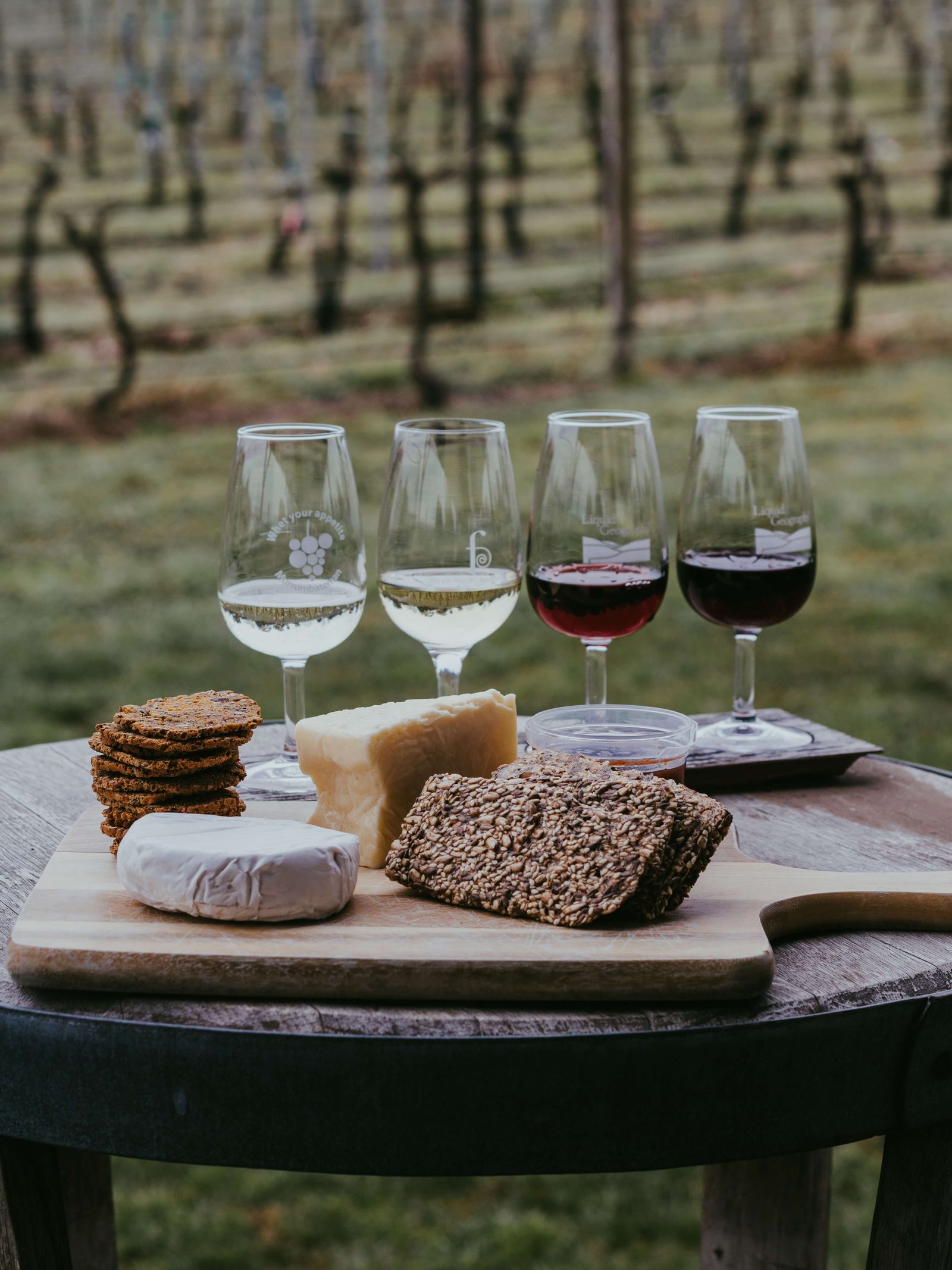Wine has been an integral part of human culture for centuries. From ancient Roman feasts to modern-day dinner parties, the pairing of wine with food has always been a cherished ritual.
But what makes a wine pairing perfect? Let's delve into the art and science behind matching wines with dishes to elevate your culinary experiences.
In This Article:
- Basic Rules of Wine and Food Pairing
- Pairing Wines with Staple Foods
- Pairing Wines with Popular Cuisines
- The Science Behind Perfect Pairings
- Frequently Asked Questions
Basic Rules of Wine and Food Pairing
Understanding the components of wine is essential when considering pairings. Here are some foundational principles:
- Weight & Texture: The wine's body should match the dish. A light wine pairs well with light dishes, while a robust wine complements richer foods.
- Flavor Profile: Complementary flavors can create harmony. For instance, a citrusy white wine might go well with a lemon herb chicken.
- Contrasting Tastes: Sometimes, contrasting flavors can be delightful. A sweet wine can balance out a spicy dish, offering a refreshing palate cleanse.
Pairing Wines with Staple Foods
Fish:
- Light Fish (e.g., Tilapia, Cod): Light-bodied white wines like Sauvignon Blanc or Pinot Grigio enhance the delicate flavors of these fish.
- Oily Fish (e.g., Salmon, Mackerel): A fuller-bodied white like Chardonnay or even a light red like Pinot Noir can complement the richness of these fish.
Poultry:
- Chicken: Versatile in its preparation, chicken pairs well with light reds like Beaujolais or whites like Chardonnay.
- Duck: Given its richer flavor, duck pairs beautifully with reds like Merlot or Shiraz.
Red Meat:
- Steak: Depending on the cut and preparation, a robust red like Cabernet Sauvignon or Malbec is a classic choice.
- Lamb: A red with some spiciness, like Syrah or Zinfandel, complements the distinct flavor of lamb.
Pork:
- Pork Chops: A medium-bodied red like Tempranillo or even a rich white like Viognier can be paired with pork chops.
- Bacon: Given its salty and fatty profile, a sparkling wine like Champagne or Cava can be a delightful contrast.
Vegetarian Dishes:
- Grilled Vegetables: A light and zesty white like Verdejo can enhance the charred flavors.
- Pasta Primavera: With its medley of vegetables, a Pinot Grigio or even a light red like Chianti can be a good match.
Cheese:
- Soft Cheese (e.g., Brie, Camembert): Sparkling wines or light-bodied whites like Chenin Blanc are harmonious pairings.
- Hard Cheese (e.g., Cheddar, Parmesan): Full-bodied reds like Cabernet Sauvignon or aged whites like an oaked Chardonnay complement the richness of these cheeses.
Pairing Wines with Popular Cuisines
Italian Cuisine:
- Spaghetti with Tomato Sauce: The acidity in tomatoes pairs well with medium-bodied red wines like Chianti.
- Osso Buco: This rich dish can be paired with a full-bodied red like Barolo.
- Risotto: A creamy risotto, especially with seafood, pairs beautifully with a light and zesty Pinot Grigio.
- Tiramisu: This classic dessert goes well with a sweet Vin Santo or even a sparkling Prosecco.
French Cuisine:
- Coq au Vin: This chicken dish cooked in red wine sauce pairs well with the same wine used in cooking, perhaps a Burgundy.
- Quiche Lorraine: A crisp white wine like Chardonnay complements the creamy texture of the quiche.
- Bouillabaisse: This Provençal fish stew is complemented by a Rosé from the same region.
- Duck à l'Orange: The sweet and savory profile of this dish pairs well with a fruity red like Pinot Noir.
Asian Cuisine:
- Spicy Thai Curry: A semi-sweet wine like Riesling can counteract the heat and enhance the dish's flavors.
- Sushi: Sparkling wines or light-bodied white wines can complement the delicate flavors of sushi.
- Butter Chicken: The creamy tomato-based curry goes well with a medium-bodied red like Merlot.
- Samosas: These fried pastries with spicy fillings are complemented by a slightly sweet and aromatic Viognier.
The Science Behind Perfect Pairings
Pairing wine and food is both an art and a science. Here's a deeper dive:
- Acidity Balance: Foods with high acidity, like salads with vinaigrette, can be paired with acidic wines to match the tanginess.
- Tannin and Fat: Tannic wines can soften the feel of fatty foods, making for a smoother eating experience.
- Sweetness: Desserts require wines that are equally sweet or sweeter to ensure the wine doesn't taste flat.
- Umami Factor: Foods rich in umami, like mushrooms or soy sauce-based dishes, can make wines taste more tannic. A wine with high acidity or some sweetness can balance this out.
Frequently Asked Questions
What is the proper pairing of wine and food?
The ideal pairing considers factors like the weight, texture, and flavor profile of both the wine and the dish.
What is the philosophy behind matching the wine list to the menu?
It's about enhancing the dining experience by ensuring that the wine complements the dish, neither overpowering nor being overshadowed by it.
What is the most difficult food to pair with wine?
Highly spiced or very salty foods can be challenging, but with experimentation, one can find a match.
Do wine pairings really matter?
While personal preference plays a significant role, harmonious pairings can elevate the dining experience to new heights.
Further Reading:
- Wine Tasting Techniques: A Beginner's Insight into Quality Wines: Enhance your wine appreciation journey by understanding the nuances of wine tasting. Learn the essential techniques and tips that help distinguish a quality wine from the rest.
- If you're on the look out for the ideal tool to open your favorite bottle, don't miss our guide on the best electric wine bottle opener.
- For fun facts about wines, check out the article "100 Essential Wine Facts" by VINCARTA.



